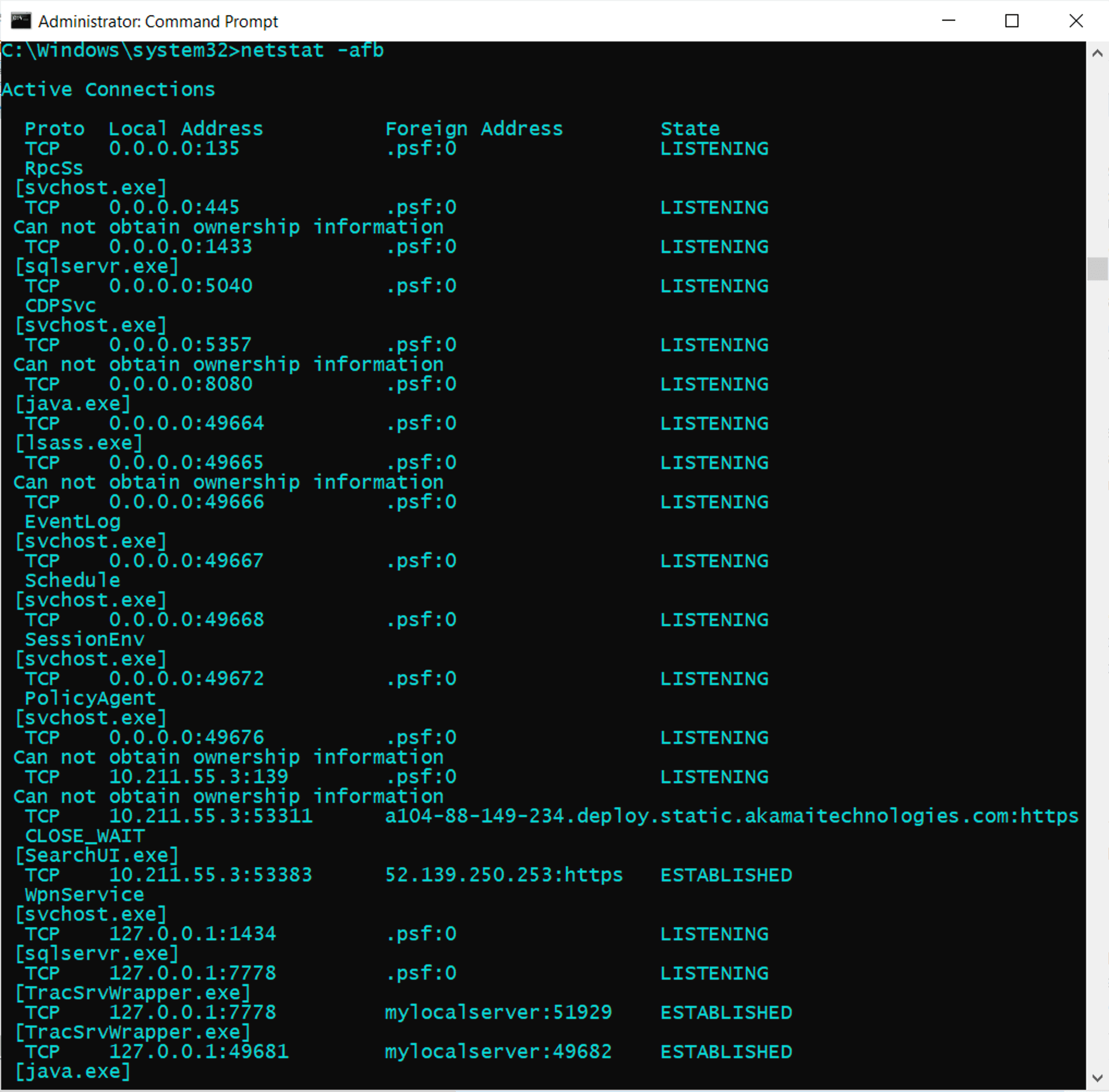

Usually, you'll never use this command unless you're using the server version of Windows or a high-performance application with a network adapter that supports this feature. NetworkDirect (opens in new tab) is a specification for Remote Direct Memory Access (RDMA), which is a process that allows fast data transfers using the network adapter, freeing up the processor to perform other tasks. Is another supported command on Windows 10, and it produces a list of NetworkDirect connections, shared endpoints, and listeners. (This feature is only present on supported network adapters.) Show NetworkDirect connections The "InHost" value indicates that offloading isn't enabled, and the "Offload" means that the feature is transferring the workload to the network adapter. The offload state refers to the TCP Chimney Offload (opens in new tab), which is a feature that transfers the network workload from the processor to the network adapter during data transmissions. Source: Windows Central (Image credit: Source: Windows Central) Show offload state connectionsĬommand generates a list of the current connection offload state. Show active and inactive connectionsĬommand displays all active and inactive connections, and the TCP and UDP ports the device is currently listening. The tool also includes several parameters that you can use in Command Prompt to display different information about the network connections.

#Grep usage windows how to
How to use netstat parameters on Windows 10 Other status include, closed, fin_wait_1, fin_wait_2, last_ack, listen, syn_received, syn_send, and timed_wait. State: Indicates where the connection is active (established), the local port has been closed (time_wait), and the program hasn't closed the port (close_wait).Foreign Address: Lists the remote device's IP (or FQDN) address with the port number after semicolon port name (for example, https, http, microsoft-ds, wsd).The double-semicolon inside brackets indicates the local IPv6 address, and "0.0.0.0" refers to the local address too. Local Address: Shows the computer's IP address followed by a semicolon with a port number of the connection.Proto: Shows the connection protocol (TCP or UDP).


 0 kommentar(er)
0 kommentar(er)
